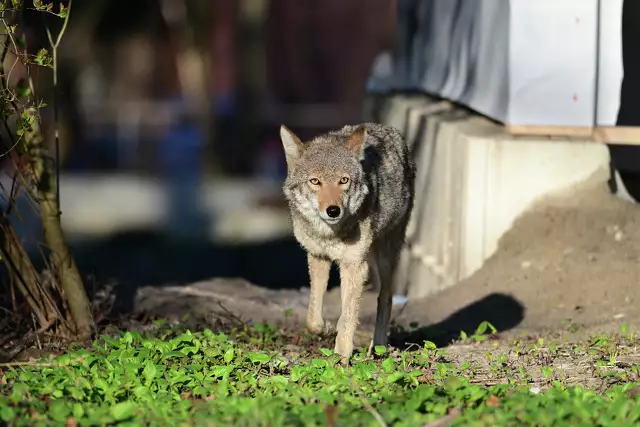Coyotes are taking over Texas right now. This is why.
By April Lanux
From playing in the snow to exploring college campuses, the creatures seem to be everywhere.
It's that time of the year when you're more likely to run into a coyote in Texas. Throughout the state, Texans are taking to social media more to share their encounters with the dog-like creatures. During this week's winter storm, Galveston resident Sydney Wallis captured footage of a coyote exploring the snow that piled up outside a home.
Further north in Frisco, Brian Edwards filmed a pack of coyotes "playing in the snow like puppies" from his balcony last week. In Katy, residents recently captured security footage of a pack of coyotes patrolling neighborhood streets. Down south at the University of Texas Rio Grande Valley in Edinburg this week, a student captured a video of a coyote strolling through campus as she walked to her dorm. At the time, the area was pretty empty as classes had been canceled due to the recent cold weather.
If it seems like Texans are having more encounters with coyotes lately, it's because they are. While the wild animals are common residents throughout Texas, they are currently more active due to their ongoing mating season, which takes place from mid-January to early March, according to the Texas Parks and Wildlife Department (TPWD). By summer, you may even see coyote pups out with their parents.
Even though coyotes are more likely to be seen during this time of the year, TPWD said they live with and among people in all urban areas in Texas, continually adapting to human communities as towns have spread into undeveloped areas. Coyotes are naturally quite wary of humans, so much so that urban coyotes have resorted to hunting during the night to avoid them, which is why some people consider them to be nocturnal. However, in areas of little or no human activity, they will hunt during all hours of the day. Hence, why some were likely seen out and about during the recent cold spell.
TPWD also emphasized the crucial role coyotes serve as predators in urban areas, keeping other wildlife populations—especially rodents, rabbits, skunks, and raccoons—in check. They are opportunistic omnivores and will readily exploit any source of food. To prevent them from being attracted to your yard, keep pet food indoors, pick up fallen bird seed and fruit from trees, remove firewood to avoid attracting rodents, and secure trash. The state agency said to avoid intentionally feeding coyotes which can directly result in aggression toward people and other dangerous behavior.
It's also important to keep pets secured indoors, as those allowed to roam freely are more likely to run into a hungry coyote that can't distinguish a pet from prey. If you run into a coyote, it's best to remind them that they should be more scared of you than you are of them. "Hazing" a coyote, or showing it signs of aggression each time it is seen, should do the trick, TPWD said. This includes making loud noises to scare them away. However, if a coyote is aggressive, notify city authorities and TPWD.
 925
925









